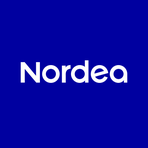Nordea Bank's Strategic Share Buyback: A Financial Ballet
January 5, 2025, 4:07 pm
Nordea Bank Abp is dancing a delicate ballet in the financial arena. The stage is set with a series of share repurchases that have captured the attention of investors and analysts alike. This strategic move is not just a simple transaction; it’s a calculated play to enhance shareholder value and optimize capital.
On January 2 and 3, 2025, Nordea executed significant buybacks, purchasing a total of 568,860 shares at an average price hovering around €10.70. The total expenditure for these two days alone reached over €6 million. This is no small feat. It reflects a commitment to returning value to shareholders while navigating the complexities of the market.
The backdrop to this performance is a buyback program announced on October 17, 2024. Nordea set a target of up to €250 million for repurchasing its own shares. This initiative was authorized by the Annual General Meeting, signaling strong support from the bank’s leadership. It’s a strategic maneuver designed to bolster the stock price and signal confidence in the bank’s future.
The repurchase program is executed in accordance with European regulations, ensuring transparency and compliance. Each transaction is meticulously documented, reflecting Nordea’s commitment to good governance. The bank’s choice to engage in public trading for these repurchases is a nod to market integrity.
The figures tell a compelling story. On January 2, Nordea bought 286,485 shares. The weighted average price per share was €10.57, totaling approximately €3.03 million. The following day, the bank acquired 282,375 shares at a slightly higher average price of €10.72, bringing the total cost to around €3.03 million again. This consistency in pricing indicates a strategic approach, as the bank seeks to manage its capital effectively.
But why engage in such a buyback? The reasons are multifaceted. First, it’s about capital optimization. By reducing the number of shares in circulation, Nordea can enhance earnings per share (EPS). This is akin to trimming the fat to make the meal more appealing. A higher EPS can attract more investors, driving up the stock price.
Second, the buyback serves as a signal to the market. It conveys confidence. When a company invests in its own shares, it suggests that management believes the stock is undervalued. It’s a message that resonates with investors, often leading to increased demand for the stock.
Furthermore, Nordea’s strategy includes holding a portion of these repurchased shares as treasury stock. As of the latest reports, the bank holds nearly 3 million shares for capital optimization and over 11 million for remuneration purposes. This dual approach allows Nordea to maintain flexibility in its capital structure while also preparing for future employee compensation.
The market reaction to these buybacks has been cautiously optimistic. Investors are keenly watching how these moves will impact Nordea’s stock performance in the coming months. The financial landscape is ever-changing, and while buybacks can provide a short-term boost, the long-term effects depend on broader market conditions and the bank’s operational performance.
Nordea’s recent actions are not isolated. They reflect a broader trend among financial institutions. Many banks are turning to share buybacks as a way to enhance shareholder value in a low-interest-rate environment. With traditional revenue streams under pressure, repurchasing shares has become a favored tactic.
However, this strategy is not without its critics. Some argue that funds used for buybacks could be better spent on innovation or expanding services. They caution that prioritizing short-term stock price increases may undermine long-term growth. It’s a balancing act, and Nordea must navigate these waters carefully.
As the curtain rises on 2025, Nordea Bank Abp is poised to continue its strategic dance. The share buyback program is a key part of its performance, aimed at optimizing capital and enhancing shareholder value. Investors will be watching closely, eager to see how this financial ballet unfolds.
In conclusion, Nordea’s share repurchase initiative is a calculated move in a complex financial landscape. It reflects a commitment to shareholder value while also positioning the bank for future growth. As the market evolves, Nordea’s strategy will be tested, but for now, it stands as a testament to the bank’s proactive approach in a competitive arena. The dance continues, and all eyes are on Nordea.
On January 2 and 3, 2025, Nordea executed significant buybacks, purchasing a total of 568,860 shares at an average price hovering around €10.70. The total expenditure for these two days alone reached over €6 million. This is no small feat. It reflects a commitment to returning value to shareholders while navigating the complexities of the market.
The backdrop to this performance is a buyback program announced on October 17, 2024. Nordea set a target of up to €250 million for repurchasing its own shares. This initiative was authorized by the Annual General Meeting, signaling strong support from the bank’s leadership. It’s a strategic maneuver designed to bolster the stock price and signal confidence in the bank’s future.
The repurchase program is executed in accordance with European regulations, ensuring transparency and compliance. Each transaction is meticulously documented, reflecting Nordea’s commitment to good governance. The bank’s choice to engage in public trading for these repurchases is a nod to market integrity.
The figures tell a compelling story. On January 2, Nordea bought 286,485 shares. The weighted average price per share was €10.57, totaling approximately €3.03 million. The following day, the bank acquired 282,375 shares at a slightly higher average price of €10.72, bringing the total cost to around €3.03 million again. This consistency in pricing indicates a strategic approach, as the bank seeks to manage its capital effectively.
But why engage in such a buyback? The reasons are multifaceted. First, it’s about capital optimization. By reducing the number of shares in circulation, Nordea can enhance earnings per share (EPS). This is akin to trimming the fat to make the meal more appealing. A higher EPS can attract more investors, driving up the stock price.
Second, the buyback serves as a signal to the market. It conveys confidence. When a company invests in its own shares, it suggests that management believes the stock is undervalued. It’s a message that resonates with investors, often leading to increased demand for the stock.
Furthermore, Nordea’s strategy includes holding a portion of these repurchased shares as treasury stock. As of the latest reports, the bank holds nearly 3 million shares for capital optimization and over 11 million for remuneration purposes. This dual approach allows Nordea to maintain flexibility in its capital structure while also preparing for future employee compensation.
The market reaction to these buybacks has been cautiously optimistic. Investors are keenly watching how these moves will impact Nordea’s stock performance in the coming months. The financial landscape is ever-changing, and while buybacks can provide a short-term boost, the long-term effects depend on broader market conditions and the bank’s operational performance.
Nordea’s recent actions are not isolated. They reflect a broader trend among financial institutions. Many banks are turning to share buybacks as a way to enhance shareholder value in a low-interest-rate environment. With traditional revenue streams under pressure, repurchasing shares has become a favored tactic.
However, this strategy is not without its critics. Some argue that funds used for buybacks could be better spent on innovation or expanding services. They caution that prioritizing short-term stock price increases may undermine long-term growth. It’s a balancing act, and Nordea must navigate these waters carefully.
As the curtain rises on 2025, Nordea Bank Abp is poised to continue its strategic dance. The share buyback program is a key part of its performance, aimed at optimizing capital and enhancing shareholder value. Investors will be watching closely, eager to see how this financial ballet unfolds.
In conclusion, Nordea’s share repurchase initiative is a calculated move in a complex financial landscape. It reflects a commitment to shareholder value while also positioning the bank for future growth. As the market evolves, Nordea’s strategy will be tested, but for now, it stands as a testament to the bank’s proactive approach in a competitive arena. The dance continues, and all eyes are on Nordea.

